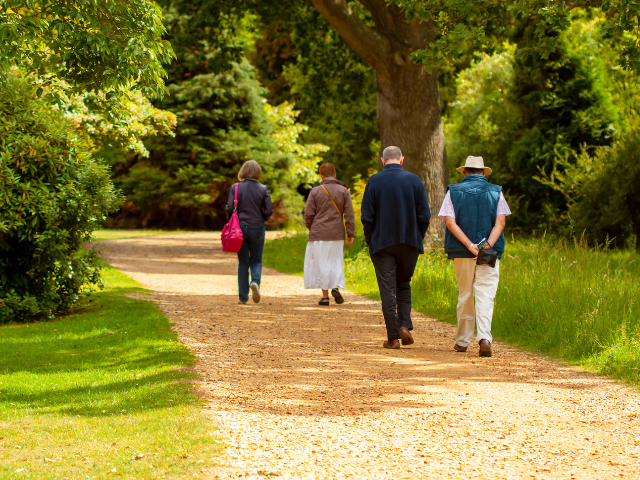
How where you live can affect how you age
21 July
A Welsh study, funded by Health and Care Research Wales, found that where older people live can significantly influence their likelihood of falling or moving into a care home.
The study, led by Professor Richard Fry, Health and Care Research Wales Senior Research Leader and Professor at Swansea University, revealed that thoughtful urban planning may help people remain healthier and independent for longer.
The researchers analysed the health records of over 860,000 people aged 60 and over, living in Wales between 2010 and 2017, using the Secure Anonymised Information Linkage (SAIL) databank, which is also funded by Health and Care Research Wales. The team tracked individuals over time, building a dynamic cohort to examine their health outcomes alongside specific environmental characteristics.
Professor Fry explained: “It was a powerful way to look at population health in a real-world context. We wanted to understand whether the physical environment in and around someone’s home could support healthy ageing.
“Things like being able to access green space or walk to your local shop without obstacles may seem small, but they could make a big difference as people age.”
Environment matters
The study found that the environment could both reduce and increase the risk of falls. Neighbourhoods with accessible services, good walkability and nearby green spaces were associated with better outcomes, including fewer hospital admissions for falls and a lower likelihood of moving into residential care.
Professor Fry said: “Living in an environment that encourages physical activity, like having services not too far away and access to usable green space, may help people stay fitter and more independent longer.”
“But it is a complex picture where greenery may also introduced trip hazards such as wet leaves or uneven paths. So in some cases, what looked like a benefit may actually pose a risk.”
Although the environment played a role, the study confirmed that individual characteristics, such as age, frailty, gender and whether someone lived alone, remained the strongest predictors of both falls and care home admissions.
Professor Fry added: “Our data confirmed what other research has shown: frailty and age were still the most significant risk factors. But the environment could either support or undermine a person’s ability to live independently with those conditions.”
Impact on people with dementia
The study also examined outcomes for people living with dementia and found they were at a higher risk of both falling and moving into care. This group appeared particularly sensitive to environmental factors.
Planning for an ageing population and supporting social care
Professor Fry pointed out that the implications of the study were wide-reaching. The findings offered clear guidance on how neighbourhoods might be designed or improved to support older adults in staying at home longer.
He said: “This wasn’t just about health. It was also about policy, housing, local government and social care. There were major financial implications. Keeping people out of care homes longer helped the NHS, social services and families.
“Our research shows that where people live is an important part of healthy ageing —making it easier and safer to move around, access green space and reach essential services—could be part of the solution.”
A vision for the future
Professor Fry concluded: “People want to stay in their homes, in familiar surroundings, for as long as possible. If we design our communities with that in mind, we can help people with healthy, independent ageing. That benefits everyone, not just older people, but society as a whole.”
Sign up to our newsletter to have the latest health and care research news delivered straight to your inbox.